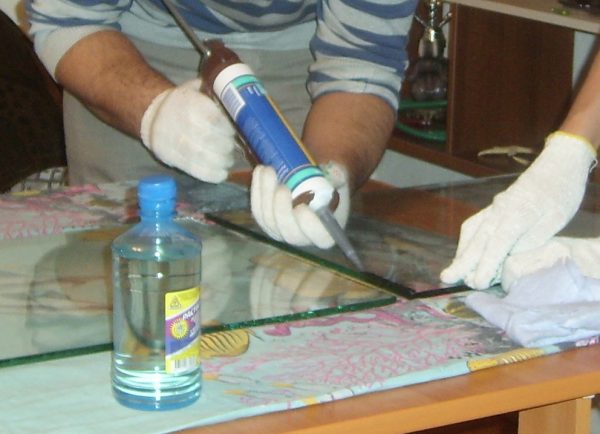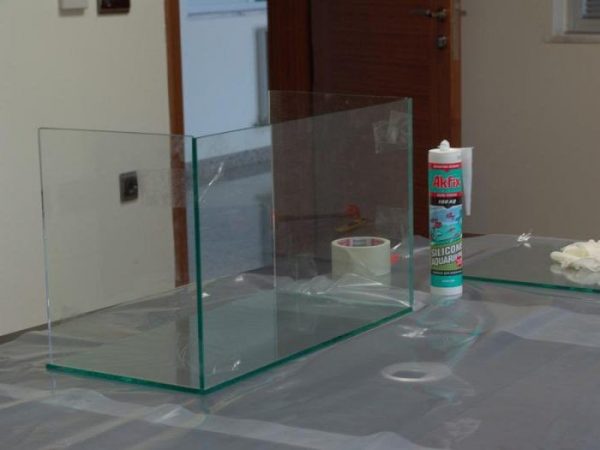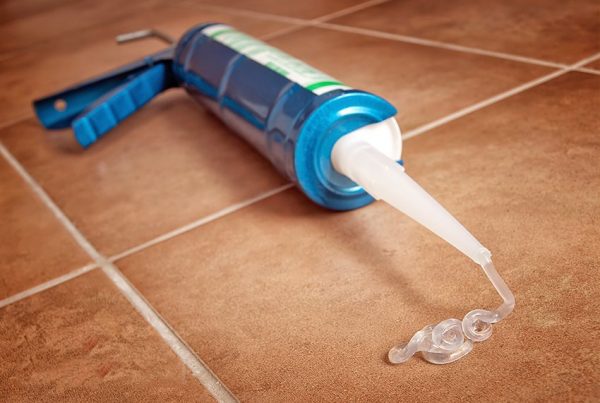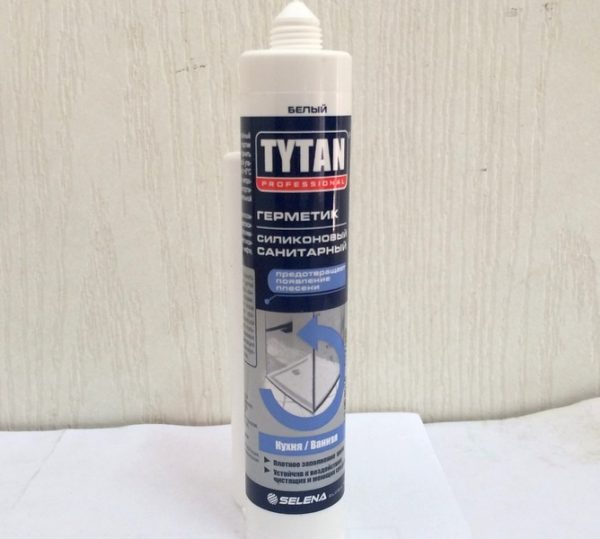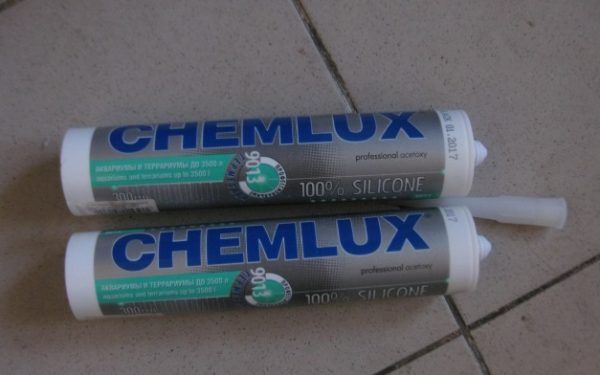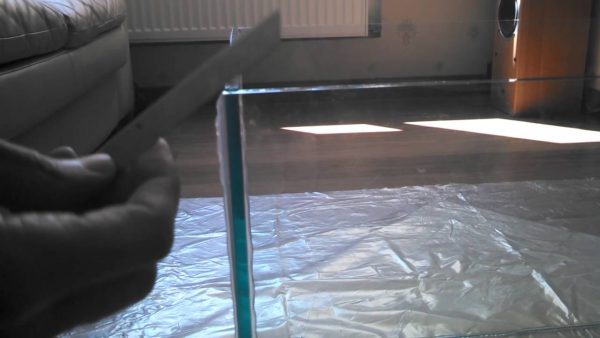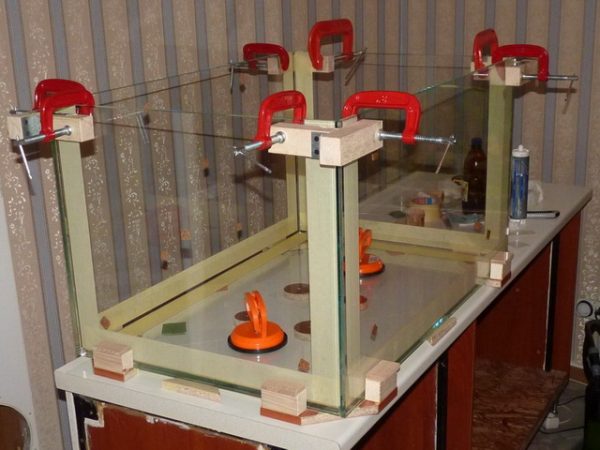Using modern materials, anyone, even a beginner aquarist, will build their own aquarium, avoiding the cost of buying it. Special sealant for the aquarium will help to reliably repair the product at home if it leaks. The main thing is that the product is safe for plants and fish and is suitable for a number of other parameters.
- General sealant requirements
- Types of sealants
- Features of choice
- Properties and composition of silicone sealant
- Black silicone
- Transparent silicone
- Advantages of Silicone Aquarium Sealants
- Popular manufacturers
- Bonding and repairing the aquarium
- Adhesive Tips
- The appearance of bubbles - control measures
- Sealant drying
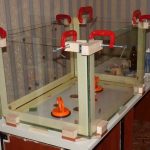
General sealant requirements
Glass can be sealed by many means, any reliable glue is suitable for this purpose. On aquarium glass is a completely different matter. For its repair, any brand of glue will not work for the following reasons:
- The walls and bottom of the glass aquarium undergo high pressure, especially for products with 300-400 liters or more. If the glue is not elastic enough, the seam will crack. The product must necessarily perfectly tolerate stretching without losing tightness.
- Aggressive factors will act on the joint for a long time. In addition to the pressure of the water mass, it is also the air outside, temperature changes, ultraviolet. Not all adhesives can endure such an effect for a long time.
- Sea and river fish, snails, plants live in a glass aquarium. They are very sensitive to the toxic components of chemistry and will die quickly. For example, taking ordinary building sealant with bitumen additives can poison living creatures. Polyurethane glue will act similarly.
Which glue is best suited to repair an aquarium or make a new one? It uses exactly good sealants that meet the following requirements:
- the absence of harmful substances, antibiotics, fungicides, acids, alkalis, dyes in the composition;
- reliability, the highest degree of adhesion to glass, plexiglass (depending on the material of the aquarium);
- elasticity, the ability to adapt to changing environmental conditions;
- water resistance.
Silicone sealant is best suited for the aquarium, a tool recommended by most experienced aquarists.
to contents ↑Types of sealants
The composition of the sealants can be acrylic, silicone, thiol, polyurethane and others. Silicone is used as the main component of the sealant, other options may be toxic to living organisms. You can use one-component and two-component tools. The former are more convenient to use; they are used as ordinary glue. The second will have to be mixed correctly, adding a certain amount of components.
If it comes to gluing small external cracks that are not through, you can apply a different type of sealant. Acrylic is not suitable here - it is very afraid of moisture, has a weak level of adhesion. Butyl sealants are also on sale: their strength is average, but they can quite close up minor defects. If the aquarium bursts, it can be cleaned of sand, pebbles, dried and sealed with epoxy glue or cold welding. After complete drying, such products are safe for fish and plants, but it will not be possible to seal the aquarium without draining the water.
to contents ↑Features of choice
Silicone sealants are divided into acidic and neutral. The former have a strong smell of vinegar, and on the tube there is a marking “A”. Neutral sealants do not have a smell, they must be bought to repair the aquarium with their own hands. They cost more than acidic ones; they cannot be too cheap. Sealants have the following properties:
- durable, elastic, moisture resistant;
- withstand drops from -70 to +70 degrees;
- do not tolerate staining - the paint literally rolls;
- they cannot stand the application of a new layer on the old one; you have to completely clean the product and degrease the base.
to contents ↑When buying, you need to pay attention to the colorlessness of the sealant (color options with added artificial pigments are not suitable), a good residual shelf life. The instructions must necessarily indicate that the tool can glue aquariums, which will confirm its safety.
Properties and composition of silicone sealant
Users often call this sealant "silicone." It is widespread in everyday life, at a construction site due to its versatility. The basis for strong bonding is artificial rubber. Also in the composition there are strength enhancers, modifiers, plasticizers. The products are transparent and colored, which must be considered when choosing. Also, the composition necessarily includes a vulcanizer (converts the paste into a transparent elastic material) and adhesives (enhance the adhesion reliability).
to contents ↑Black silicone
The black sealant is considered by many to be the strongest, strongest, which does not leak and can withstand any load. In fact, the adhesion index and curing rate are not different from other means, the aesthetic properties are simply improved. After gluing the seams, they will gain an attractive appearance, the correct geometric shape. Black sealant on large aquariums will look especially beneficial.
to contents ↑Transparent silicone
The use of transparent sealant will help visually “unload” the structure and make it look weightless. Unfortunately, completely transparent formulations can be stained by the action of feed, drugs that are added to water. A film of plaque will be visible on the transparent sealant, adhering algae are more noticeable. It is better to use such material in small aquariums.
to contents ↑Advantages of Silicone Aquarium Sealants
By such means it is always recommended to glue aquariums, terrariums, since they are absolutely harmless, do not contain toxins. When working with silicone, you do not need to use a mask, goggles and other protective devices, because they do not emit fumes. How much the product dries is always indicated in the instructions, for most adhesives it is only 20 minutes, and the product can be operated after a day.
Other advantages of the material:
- high strength of the seam - for destruction, a mass force of more than 200 kg must be applied;
- excellent elasticity, lack of cracking of the adhesive layer during operation;
- long service life and usability.
If a special aquarium sealant is not found on sale, you can buy silicone glue for dishes, water supply, but with no fungicidal, antimicrobial additives.
to contents ↑Popular manufacturers
Sealants presented in stores vary in composition, quality, price. Among the materials that are most often chosen by users, it is worth specifying the following:
- Chemlux 9013. High-speed composition, incredibly resistant, durable, long stored even in open form. One tube is enough for an aquarium up to 3000 liters.
- Herment moment. 100% silicone, ideal for aquariums, terrariums. Withstands contact even with sea water, reliably seals joints, including those subject to vibration. It can be used on ordinary, laminated, glazed glass.
- Soudal AQ. Made in Belgium, safe for any living organisms. Can gluedl not only glass, but also plastic, wood, metal, ceramics. It features high water resistance.
- KimTec (Kim Tech). As the air is exposed, the product turns into soft elastic silicone rubber that is resistant to any adverse factors. Suitable for sealing terrariums, aquariums, shop windows, glass artworks.
- Krass. Inexpensive, flexible and moisture resistant, but has an acidic smell due to the presence of a small amount of acid. It is allowed for use from the outside of the aquarium. After applying the sealant, the product must be left for a day in a well-ventilated area.
- Titanium. Safe, high-quality product, harmless to any living creatures, very elastic. It is made in Poland.
Bonding and repairing the aquarium
How to glue an aquarium at home using sealant? Instructions for beginners:
- to lay a desktop with cellophane;
- paste over the cut glass parts with masking tape, stepping back from the edges to protect them from contamination;
- degrease the areas to be glued with alcohol or acetone;
- apply sealant, smooth (do not need to make too thick a layer);
- lean against the bottom of the wall (first the front, then the right and left, then the back);
- hold parts, fixing them for the time specified in the instructions with rubber bands, threads, bundles;
- until the glue has dried, run along the outer and inner part of the seam with a scraper to remove excess composition;
- after the drying time (usually no more than 24 hours), fill the aquarium with water, make sure that it does not flow along the seam, then drain this water.
If old glass is used for the manufacture of the aquarium, you need to completely clean it from the existing glue, sealant. This is done with acetone and a sharp metal spatula. It is important to lubricate only dry surfaces with a sealant; on wet ones, adhesion will immediately decrease.
When the aquarium is cracked, the procedure for repairing it with sealant will be as follows:
- inspect the leak, remove condensate;
- drain the water, fish and plants into another container;
- dry the defect, degrease with alcohol;
- squeeze the sealant into the crack, flatten with a rubber spatula;
- wait for the time necessary for drying.
to contents ↑
Adhesive Tips
To remove excess glue, which is already a little dried up, you can use table vinegar. They moisten a cloth and gently wipe the base. During the repair of the old aquarium, you should always clean the fish, even if the crack is minimal. For beginners to create a new aquarium, it is recommended to use only transparent sealants and a special glue gun - it is easier to use it than to apply glue manually.
to contents ↑The appearance of bubbles - control measures
Air can form when the parts are not glued together carefully or carelessly glued. You can remove bubbles by adding sealant and tightening the walls of the aquarium. Also remove the air when passing through the seam with a rubber roller.
It happens that the problem is identified after the solidification of the silicone. Then the balloons are pierced with a needle. If there are large defects, you will have to open and re-glue the seam.
to contents ↑Sealant drying
Usually silicone sealants harden in 20 minutes, some materials harden after half an hour from the time of application. The final polymerization time is 20-24 hours. Then you can remove the fixing screed, and send the aquarium for testing. High-quality glue will seriously save on the purchase of capacity and make a beautiful aquarium yourself!

